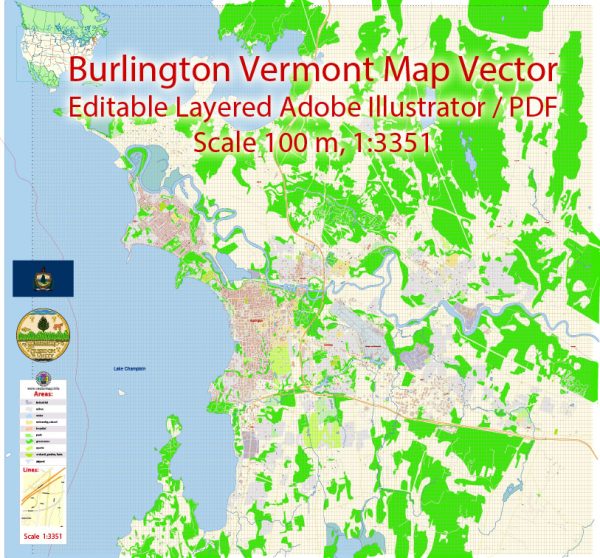Burlington, Vermont, has a rich history that spans centuries, and it is the largest city in the state of Vermont. Here is a brief description of its history:
- Early Indigenous Inhabitants: Before European settlers arrived, the area that would become Burlington was inhabited by various Indigenous peoples, primarily the Abenaki tribe. They relied on Lake Champlain and its surrounding resources for sustenance and trade.
- European Settlement: European exploration and settlement in the Burlington area began in the late 18th century. In 1773, Ira Allen, one of Vermont’s founding fathers, purchased land in the area and established a settlement, initially called Allen’s Landing.
- The American Revolution: Vermont was an independent republic for a short time during the American Revolution. Burlington served as the capital of this independent Vermont Republic from 1777 to 1791.
- 19th Century Growth: The 19th century brought significant growth to Burlington, driven by commerce and the development of the Erie Canal, which facilitated trade and transportation. The city’s natural harbor on Lake Champlain made it a hub for shipping and trade, with lumber and textiles being important industries.
- The University of Vermont: Founded in 1791, the University of Vermont (UVM) is one of the oldest universities in the United States. It has been a central part of Burlington’s history, and its presence has had a significant influence on the city’s development and culture.
- Abolitionism and Underground Railroad: Burlington played a role in the abolitionist movement during the 19th century. It was a stop on the Underground Railroad, helping escaped slaves find freedom in Canada.
- The Civil War: Many Burlington residents served in the Union Army during the American Civil War. The city’s Battery Park, overlooking Lake Champlain, was a training ground for soldiers.
- 20th Century and Beyond: In the 20th century, Burlington saw changes in its economic base, with manufacturing declining and tourism becoming more important. In the late 20th century, the city became known for its progressive and environmental initiatives.
- Bernie Sanders: Burlington is famous for being the hometown of Bernie Sanders, who served as the mayor of the city in the 1980s before becoming a U.S. Senator and a prominent figure in American politics.
- Modern Burlington: Today, Burlington is a vibrant city known for its picturesque location on the shores of Lake Champlain, its cultural scene, and its commitment to sustainability. The Church Street Marketplace, a pedestrian shopping and dining area, is a central hub of activity. Burlington remains an important economic, educational, and cultural center in Vermont.
Burlington’s history is a testament to its evolution from a small settlement in the late 18th century to a thriving city that combines a commitment to environmental sustainability with a rich cultural heritage.


 Author: Kirill Shrayber, Ph.D.
Author: Kirill Shrayber, Ph.D.